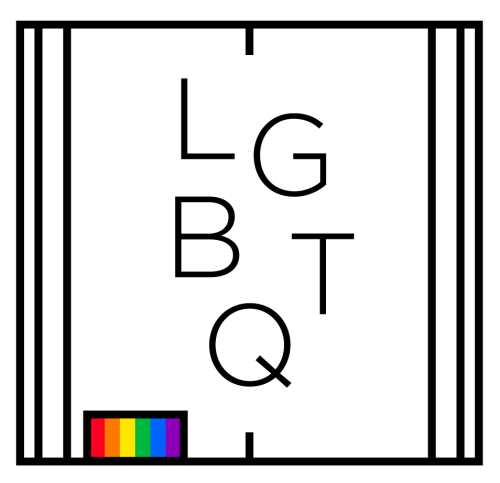Rainbows in the Stacks: Many Ways to Meet the Needs of LGBTQ Library Patrons
Editor’s Note: This commentary by librarian Anna Call is part of our special focus on LGBTQ issues for the month of June.
Thirty years ago, which is within my lifetime, we would not even have had this conversation. People knew that there were gay and lesbian people visiting their libraries, but most would not have gone out of their way for them even if they’d known how. At best, their response may have been ambivalent. We serve all people, they might have said. People can look up homosexuality in the card catalog if they’d like, and that’s all we can do.

But the library role has evolved with our sensibilities. Libraries used to be segregated, too. Libraries didn’t raise a whisper when comics were burned in 1954. We learn, we grow, we realize that patrons need active librarians. Some need active librarians more than others. Such is the case with the LGBTQ community.
Libraries are havens and sources of information for this demographic, disproportionately valuable to the point of being crucial. It’s a far cry from casually using the library for a book group to relying on it as the single source of information on other people like you. That’s the position that LGBTQ people may find themselves in: reluctant to tell their families and friends, without any LGBTQ mentors in their community to help them with questions specific to the experience of being queer, and, sometimes, terrified of being found out too soon.
To compound the problem, research into LGBTQ library patrons is a slippery proposition. On one hand, it’s often old. I suspect that LGBTQ people who are into using the library anonymously are also not into answering survey questions, which means that actual quantitative studies of gay library users are true unicorns. But research that occurred nine years ago can’t factor in recent developments in the ever-rapidly developing situation of LGBTQ people, including marriage equality, safe spaces, even gay-straight alliances. On the other hand, many of the conclusions of that outdated research still ring true. For example, take Stephanie Mathson and Jeffrey Hancks’s landmark 2008 study on the self-checkout behaviors of LGBTQ people, which indicates that this community prefers privacy at the circulation desk. Despite its age, the logic behind this conclusion makes sense when you consider how many LGBT youth are still thrown out of their homes.
And yet, despite the absence of tons of data, opinions bloom rampant among librarians as to what to do. In fact, librarians have filled a decent sized Wikipedia page with their opinions on what, exactly, libraries have to do with LGBTQ patrons. LGBTQ activist and advice columnist Dan Savage was a prominent guest at the American Library Association’s 2012 meeting and people were psyched. The great annual librarian conference party was even held at notorious New Orleans gay bar Oz. The will to embrace the rainbow is clearly present, complimentary bottomless Hurricanes notwithstanding.
Safe Conduit of Information
But service in the stacks can be much harder than hugging Dan Savage at ALA. In a nation whose dialogue is currently overtaken the exhausting high-decibel whine of political drama, the quiet reality of a teenager being banished from their own home is easy to miss. Families that drive away a child are unlikely to brag about it, if for no other reason than that they want to avoid admitting that they have a gay kid, and a gay kid who’s just been tossed out will know better than to trust another adult. Even for young people in the closet, unsure of how their parents would react to unexpected news, the threat of banishment looms as a terrible and all-too-real possibility.
A safe conduit of information is crucial to the safety of these young people, not to mention older patrons who face job discrimination, housing issues, and marital problems if they’re caught being gay. Researching this information at home, where families can stumble across browser histories and borrowed books, is tantamount to an admission. The library is relatively anonymous, public and therefore safe, and equipped with free computers. Books can be read there without being checked out. Librarians can be questioned without fear of repercussion. There’s no security like the security of knowing that the person you just spoke to will see 500 more faces before the end of the day.
You already have LGBTQ patrons. If it doesn’t seem like gay people come to your library—if you haven’t spotted any in the wild—then they’re lurking, maybe because they don’t feel completely comfortable. Forget the fabulous gay guy and the loud butch lesbian. LGBTQ people are experts at staying below the radar when they need to. Assume you have several now. The kid who skips school to play Roblox on your computers? Quite possibly gay. The two girls who always seem to be in on the weekends? Those could absolutely be runaways—remember, some homeless shelters close during the day. The balding, middle-aged guy who’s always in selling records may need your help, too, when he’s looking for doctors to help him through his gender transition.
It’s About Serving Your Community
I want to stress that it doesn’t matter how you feel about LGBTQ people. You could be the biggest advocate, the hottest detractor, or the most lukewarm of noncarers. You could be in the Midwest, the Deep South, San Francisco, or Devonshire. Whether you see them or not, seven to ten percent of your patrons are LGBTQ. This isn’t about waving a flag or feeling like a good person every June. There is no statement to be made here, no politics, no culture war. This is about serving a population in your community that is there no matter whether you address it or not. And if you don’t address it, a portion of that population will suffer at the hands of a culture that only halfway accepts them.
Also, not for nothing, but the LGBTQ community likely accounts for more than its share of stats because of its need. If nothing else, think of that statistically significant bump in your numbers.
Luckily, making your library LGBTQ-friendly is pretty easy. The first rule is that discretion is the better part of valor for vulnerable LGBTQ people regardless of age or living situation. Therefore, the holds shelf is a potentially worrisome phenomenon. If your holds are situated in a help-yourself format, then LGBTQ patrons won’t necessarily feel comfortable ordering books. After all, their parents/friends/enemies/whoever could come along and discover those books at any time, possibly even intending to pick their books up as a courtesy. In fact, restricting hold access is just a good idea, period. Your patrons will initially gripe, but you will spare them—and yourself—much worse. This goes double if you restrict pickups to the individual who ordered the book. Don’t hand an entire family’s stack of held books over to a patron only to watch him realize kid might be gay. Even if that parent will treat their child well, that’s a conversation that the library shouldn’t start.
As the Mathson and Hancks article so nicely illustrates, there are also some strong indications that LGBTQ people prefer self-checkout. There could be a lot of reasons for this, ranging from a desire to hide sensitive reading material from librarians to a desire to just hide. Either way, self-checkout is a good investment if you want to woo gays.
Anyway, what’s good for the LGBTQ community is also good for the straight majority of patrons. A hidden holds shelf protects divorcing spouses and cancer patients as neatly as it covers lesbians and transpeople. Romance readers can use a self-checkout machine without shame, mentally ill people can investigate treatment without risking their anonymity, and everyone can be discreet about their political opinions. Win, win, win, win, and win.
By forcing your library to accommodate one vulnerable group, you’ve covered several others. In fact, you may be able to leverage romance readers with your trustees better than you can leverage a handful of LGBTQ people. There’s no shame in sneaking this one through without using the word “gay.” It’s the service that matters in this case, and concessions to a community’s dialogue can be made without losing any points. Megaphone-style librarian advocacy is nice, but not as nice as your friends not finding out about your homosexuality through the library.
Things really are getting better out there, I promise. They’re probably better in your community already. But assume that they’re not 100 percent. Assume there’s one jerk in your town who would fire someone for being gay, or deny housing, or kick their kid out. Assume even that there’s at least one gay kid who wants to figure things out for himself before making an announcement to his assuredly supportive family. Cater to the worst possible situation and then everyone will be covered.
What Libraries Can Do
And you can take a much more active role than just setting out some self-check machines and quietly relocating your holds shelf. While 40 percent of homeless people are LGBTQ youth, 40 percent of LGBTQ people are not homeless. The majority of LGBTQ people have resources these days, including job protections and actual green money, and they like to help younger people. The term chosen family sprang up in the eighties to describe what happens when queer people band together for mutual support. Libraries can help seed this process by giving space to GSAs, LGBTQ book clubs, teen groups, inclusive proms, and LGBTQ-themed movie nights.
Really, go wild. Have an HIV testing day. Hire an LGBTQ-friendly medical professional to come in and answer questions. Giving people a social space in a library insulates their activity within the walls of a respected municipal organization that comes with a hefty dose of respectability. Not only is this a good way to make LGBTQ people feel safe, but it can start softening up your wider community’s homophobia without forcing you to suicidally charge the trenches.
Finally, curate LGBTQ materials. Don’t worry about whether anyone will borrow them. Watch the spine wear and you’ll see your investment pay off. There are books that will get you started and free websites that will guide your steps onward, including Lambda Literary, the Stonewall Book Award, and, of course, ForeWord Reviews.
No reason to hang out a rainbow flag or have your own Pride week in the library if your situation isn’t good for that. (If it is, of course, go to town. This is June. Rock your rainbow socks off.) Your job is to keep your LGBTQ collection current and to care for the people who come in the door.
The library can be a springboard, or a foundation, or part of the structure of our patrons’ lives. But it will be involved, one way or another, in the continued growth of the LGBTQ population as it comes into its own as a distinct part of American society. This isn’t just something libraries should do. It’s part of the reason that libraries exist. And what an exciting time to be part of that.

Anna Call is a reference librarian at the Nevins Memorial Library in Methuen, Massachusetts. Follow her on Twitter @evil_librarian.
Anna Call
